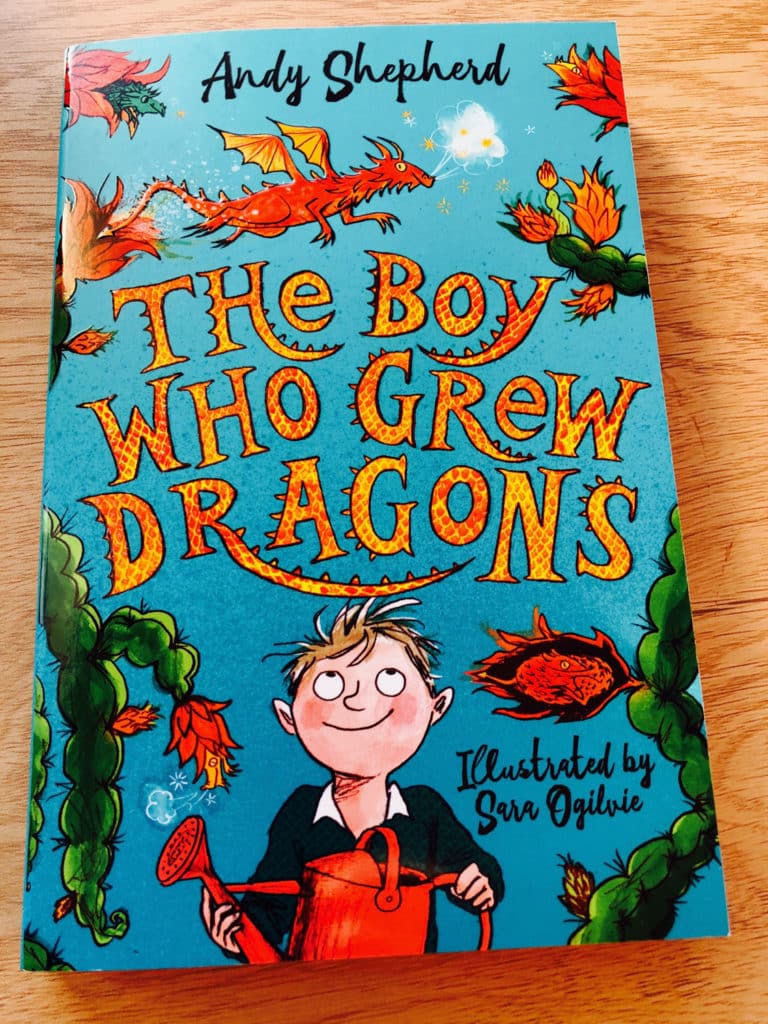BooksforTopics Reading for Pleasure Recommendations


Book Title: The Boy Who Grew Dragons
Author: Andy Shepherd
Illustrator: Sara Ogilvie
Publisher: Piccadilly Press
Publication Date: June 2018
Most Suitable For: Years 2-4
Imaginative and charming, The Boy Who Grew Dragons is a wonderfully whimsical story that kept me smiling the whole way through. The first in a series of three stories from debut author Andy Shepherd, this hugely entertaining adventure about a small boy and his pet dragon would make a super read-aloud for years 2, 3 or 4.
Tomas is busy in the garden with Grandad, planning which fruits to grow that might be turned into delicious jams or tasty tarts. When Tomas stumbles across a strange tree with curious-looking fruits, he never expects that what might emerge from the fruit could be a real live dragon! So when a baby dragon does appear from within the red spiky fruit, Tomas intrepidly takes it upon himself to nurture the adorable tiny dragon, which he names Flicker. Much to Tomas’s surprise and the reader’s amusement, Flicker quickly demonstrates that he really is quite a handful (because dragons turn out to be A LOT more trouble than cucumbers), with an insatiable appetite, exploding poo and an uncanny ability to singe people’s eyebrows. What follows is a rip-roaring adventure as Tomas becomes acquainted with and quite attached to his new species of pet. Attempting to keep Flicker a secret is no easy challenge, especially when more fruits appear on the tree and Tomas needs to figure out what he will do with the new crop!

This is an adventure that is humorous at every turn, but also full of heart. The pleasure that the relationship with the baby dragon brings to Tomas is wonderfully portrayed and any reader who has ever nurtured a plant, pet or person will find Tomas’s sense of joy hugely relatable and comforting. Also heart-warming are the family dynamics between Tomas and his younger sister Lolli as well as with his grandparents, who inspire him to engage in gardening. Tomas is a great positive role model for showing how young people can apply curiosity and creativity to the process of growing and nurturing plants and see ‘magic’ in the endeavour, and this is such a wonderful asset that we have added this book to our Plants & Trees booklist for KS2.

Coupled with charming illustrations by Sara Ogilvie, this early chapter book makes a fantastic choice for newly confident readers just taking off with independent reading and it will also go down a storm as an entertaining read-aloud in Years 2-4. I am convinced that this story is going to be hugely popular in primary classrooms and I am really looking forward to the rest of the series.
Look out for a special dragon-themed guest blog post from author Andy Shepherd later this month.
This book also features on:

——————
The Boy Who Grew Dragons publishes on Thursday 14th June 2018.
Order The Boy Who Grew Dragons online or from your local bookshop or library.
Many thanks to the publisher for kindly sending me a review copy of this book.









